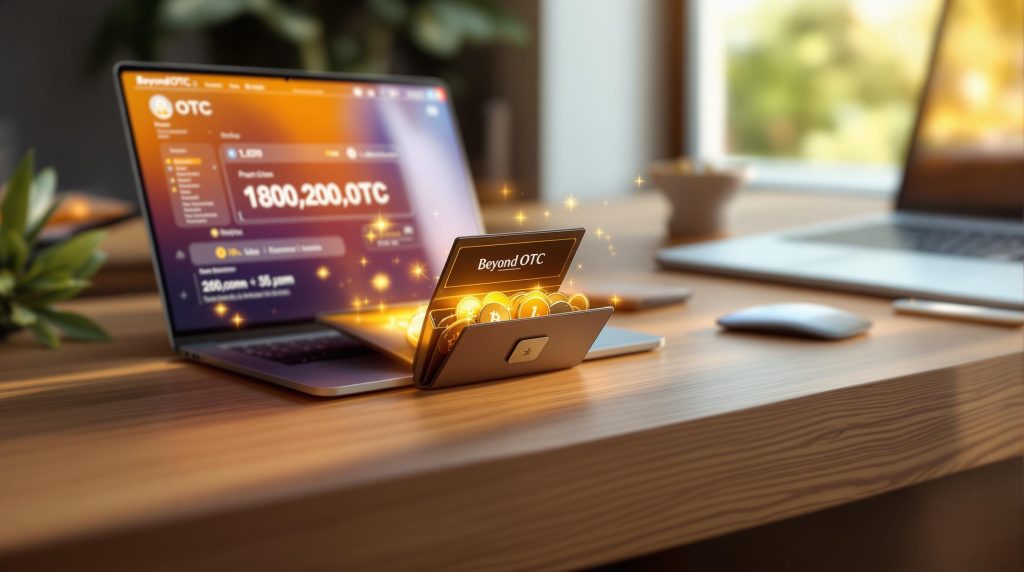Losing your private key means losing your crypto forever. Protecting it is critical to safeguarding your digital assets. Here’s a quick summary of how you can secure your private keys effectively:
- Use a hardware wallet: Keeps your keys offline and safe from hackers.
- Back up your keys: Write them down and store in multiple secure locations.
- Set up multi-signature wallets: Require multiple approvals for added security.
- Encrypt your keys: Use AES-256 encryption with strong passwords.
- Enable two-factor authentication (2FA): Use hardware tokens or biometric verification.
- Avoid public networks: Use a VPN and avoid accessing wallets on public Wi-Fi.
- Keep software updated: Regularly update wallet software, firmware, and security patches.
How To Store Private Keys Safely
Private Keys in Crypto: Basic Concepts
Before diving into methods for secure storage and protection, it’s important to understand the basics of private keys.
What Private Keys Do
A private key is a unique alphanumeric code that plays a crucial role in cryptocurrency. It’s used to authorize transactions and verify ownership of your crypto assets. This key is mathematically linked to your public wallet address. When you make a transaction, your private key generates a digital signature, confirming your authority to move funds.
Think of your private key as the key to your crypto wallet. Unlike your public address, which can be shared, your private key must remain secret. It’s used to sign transactions, create your public address, prove ownership of your assets, and manage your holdings.
Because of this, if your private key is compromised, your funds are at serious risk.
Security Risks and Consequences
The importance of your private key means that any exposure can lead to immediate and often irreversible consequences. Unlike traditional banking, cryptocurrency systems don’t have a central authority to recover lost funds or undo unauthorized transactions.
| Risk Type | Short-Term Impact | Long-Term Impact |
|---|---|---|
| Key Loss | Loss of access to funds | Permanent inability to recover assets |
| Key Theft | Unauthorized transactions | Complete depletion of your wallet |
| Key Exposure | Increased risk of targeted attacks | Long-term compromise of wallet security |
Other risks include physical vulnerabilities (like storing keys on paper that could be damaged), digital breaches (from unencrypted files), and scams like phishing or social engineering.
Once your private key is compromised, the security of your cryptocurrency holdings is permanently affected. Blockchain transactions are irreversible, making it critical to protect your private key to secure your digital assets.
Key Security Methods
Keeping private keys safe requires multiple layers of protection. One effective approach is using hardware wallets.
Hardware Wallet Protection
Hardware wallets store private keys on a secure chip that stays offline. This setup ensures that even if you connect the wallet to a compromised computer, your private keys remain secure, as all transaction signing happens within the device itself.
Here’s why hardware wallets are a solid choice:
- Offline security: Keeps private keys isolated from online threats.
- Manual transaction approval: Adds an extra layer of control and safety.
- Tamper-resistant design: Prevents unauthorized access to your keys.
Hardware wallets are a reliable way to protect your digital assets. Other important practices include securely backing up your keys and steering clear of common mistakes.
sbb-itb-7e716c2
High-Level Security Steps
Beyond basic precautions, advanced strategies provide an additional layer of protection for your private keys. These measures are designed to handle higher risks and secure larger crypto holdings.
Multi-Signature Wallets
For better security, multi-signature (multisig) wallets require multiple private keys to approve a transaction. This setup makes unauthorized access much harder. Common configurations include requiring 2-of-3 or 3-of-5 key approvals.
To set up a multisig wallet:
- Choose trusted individuals to hold the keys.
- Decide on the number of required approvals for transactions.
- Test the setup with small transfers to ensure it works as expected.
This approach is particularly useful for corporate treasury management. But multisig is just one part of the equation – encryption is another key step.
Encrypting Private Keys
Use AES-256 encryption to secure your private keys. Protect them with a strong password that’s at least 16 characters long and includes uppercase letters, lowercase letters, numbers, and special symbols. Avoid using personal information in your passwords. Store the encrypted keys in multiple secure locations to reduce the risk of loss or theft.
Two-Factor Authentication (2FA)
Strengthen security by enabling two-factor authentication. Use hardware tokens like YubiKey, set up biometric verification, and store backup codes offline for emergencies. Regularly review access permissions and conduct security audits to minimize risks from technical flaws or social engineering attacks.
Security Risks to Avoid
Even with strong key management, it’s essential to address external risks to protect your crypto assets fully.
Public Network Risks
Using public Wi‑Fi can expose your private keys to threats like network sniffing, evil twin attacks, and session hijacking. These attacks intercept data between your device and the network, putting your assets at risk.
Here’s how to protect your private keys when using public networks:
- Use a trusted VPN service for end-to-end encryption.
- Enable your device’s firewall to block unauthorized access.
- Turn off automatic Wi‑Fi connections to prevent unintentional connections.
- Avoid accessing cryptocurrency wallets while on public networks.
Outdated software can also create serious vulnerabilities, making it easier for attackers to exploit weaknesses.
Update Requirements
Keeping your wallet software up-to-date is just as important as securing your network.
Key update practices include:
- Regularly running the latest wallet software version.
- Installing security patches as soon as they are released.
- Checking and updating hardware wallet firmware monthly.
| Update Component | Check Frequency | Verification Method |
|---|---|---|
| Wallet Software | Weekly | Official website hash check |
| Security Patches | As released | Digital signature verification |
| Firmware | Monthly | Manufacturer’s update tool |
| Operating System | Automatic | System authentication |
In addition to these, ensure your operating system, antivirus software, and other security tools are consistently updated to maintain a secure environment. Staying proactive with updates minimizes potential vulnerabilities.
Conclusion
A clear and well-planned security strategy is essential for protecting your digital assets. To reduce the risk of compromise, safeguard private keys with multiple layers of technical controls and continuous monitoring.
Focus on key security by using hardware-based solutions like offline wallets, implementing strong backup methods, and enforcing strict access measures such as multi-signature setups. These elements combine to create a solid defense against unauthorized access and potential asset loss.
Maintaining security also means staying proactive. Conduct regular audits, apply updates promptly, and stay informed about new threats. By consistently following these practices, you can build a strong foundation to protect your cryptocurrency investments.
In the next section, discover how BeyondOTC can help strengthen these security measures even further.
BeyondOTC Services

BeyondOTC builds on the security measures mentioned earlier to provide advanced solutions for high-value cryptocurrency transactions. With over $305 million in total transactions handled, they specialize in institutional-grade services designed to ensure safety and efficiency.
Their OTC trading services include:
- 24/7 monitoring and support to maintain constant oversight
- Custom trading algorithms designed to add an extra layer of security
- Deep liquidity pools to handle large transactions securely
For institutions managing substantial crypto assets, BeyondOTC integrates consulting services with their trading offerings. They’ve successfully overseen more than $2 billion in client assets across 23+ projects.
Key Security Features
| Security Feature | Description |
|---|---|
| Risk Management | Advanced systems to detect threats |
| Transaction Validation | Multi-step verification processes |
| Asset Protection | Institutional-grade custody solutions |
BeyondOTC also leverages an extensive network within the cryptocurrency space to provide enterprise-level security. Their solutions safeguard private keys while supporting large-scale transactions, making them ideal for institutions needing both strong security and high-volume trading capabilities.
For more details on how BeyondOTC can protect your digital assets, visit BeyondOTC.




